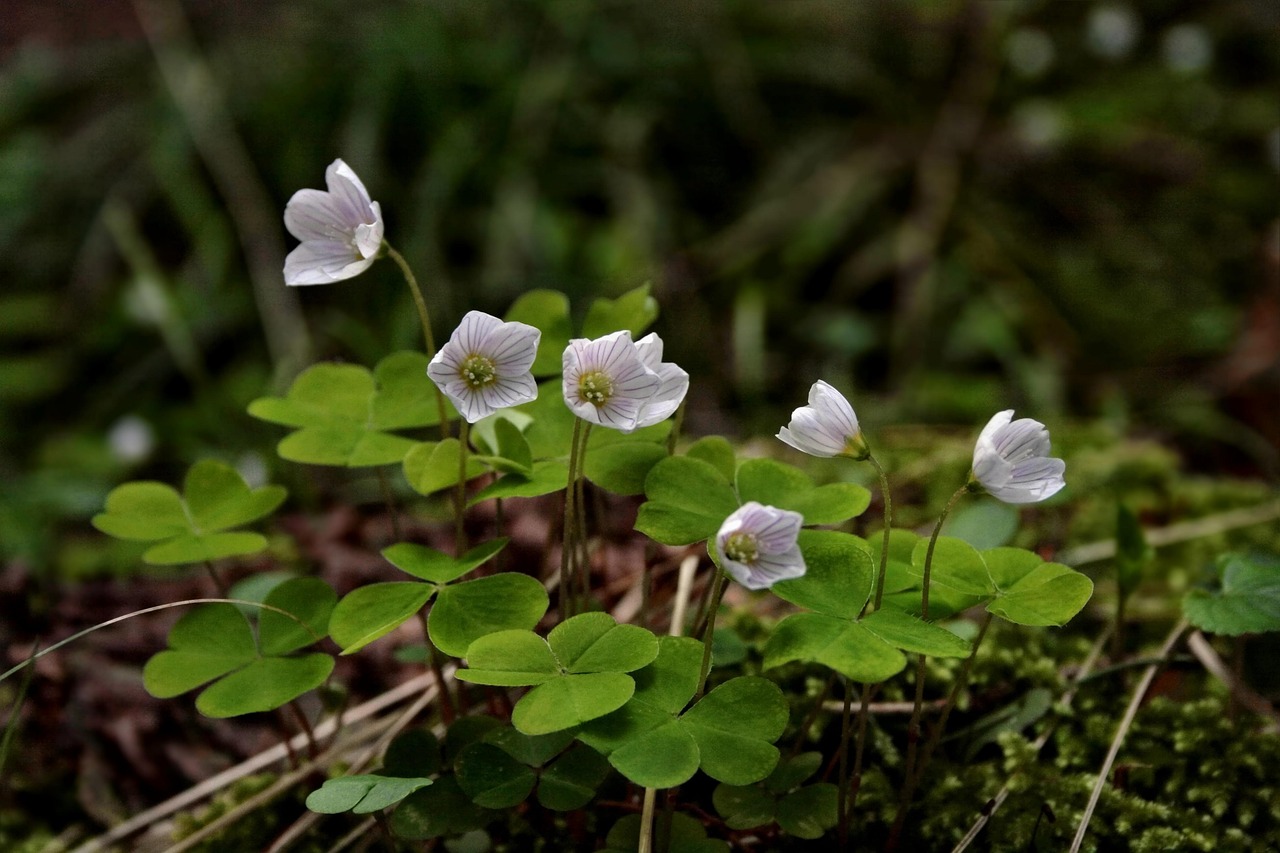The Four-Lined Plant Bug, known scientifically as Poecilocapsus lineatus, is identifiable by its distinct black body and four yellow stripes. Effective management involves monitoring for signs of infestation, using insecticidal soaps, and introducing natural predators like ladybugs to maintain balance in your garden.
Understanding Four-Lined Plant Bugs

Four-Lined Plant Bugs are common pests found in gardens across North America. They primarily target a variety of plants, especially those in the aster family, including daisies and sunflowers. The adult bugs are approximately 1/4 inch long and are easily recognized by their unique coloration. Their striking appearance contrasts sharply with the green foliage in which they often reside.
These pests not only cause aesthetic damage to plants but can also lead to significant health issues for the affected flora. Their feeding habits involve piercing plant tissues and sucking out vital fluids, which can lead to wilting, yellowing of leaves, and stunted growth. It is crucial for gardeners to understand how to identify these pests early to implement effective control measures.
Life Cycle and Behavior
The life cycle of the Four-Lined Plant Bug consists of several stages: egg, nymph, and adult. Understanding this cycle is essential for effective management. The female bugs lay eggs in clusters on the undersides of leaves, where they remain hidden from predators. These eggs hatch into nymphs, which resemble miniature adults but lack fully developed wings.
Nymphs go through multiple instars before maturing into adults. During this time, they are particularly vulnerable and can be managed more easily. Adults emerge in late spring and can reproduce quickly, leading to larger infestations if not controlled early.
| Stage | Description | Duration |
|---|---|---|
| Egg | Small clusters laid on leaf undersides. | 1-2 weeks |
| Nymph | Juvenile stage resembling adults without wings. | 2-3 weeks |
| Adult | Fully developed bugs with wings and reproductive capability. | Several weeks to months |
Identifying Infestations
Recognizing an infestation early can save your plants from severe damage. Look for the following signs:
- Yellowing or wilting leaves, which indicate feeding damage.
- Visible bugs on the underside of leaves or stems.
- Black fecal spots on leaves that result from their feeding activity.
- Pale or distorted foliage as a result of sap removal.
Regular monitoring of your plants is crucial. Examine them closely during the growing season, particularly in warmer months when these pests are most active. Pay special attention to newly planted or stressed plants that may be more susceptible to infestation.
Preventative Measures
Prevention is key when it comes to managing Four-Lined Plant Bugs. Here are some effective strategies:
- Cultural practices: Maintain healthy soil and provide adequate water to reduce plant stress.
- Companion planting: Use plants that repel Four-Lined Plant Bugs, such as marigolds.
- Regular maintenance: Keep your garden clean by removing debris and dead plants that can harbor pests.
Implementing these measures can greatly reduce the likelihood of infestation and promote a thriving garden ecosystem.
Identifying Natural Predators
One effective way to manage Four-Lined Plant Bugs is by encouraging their natural predators in the garden. Understanding which beneficial insects can help control these pests is crucial for maintaining a balanced ecosystem. Here are some of the most common natural predators:
- Ladybugs: These colorful beetles are voracious eaters of aphids and other soft-bodied insects, including nymphs of Four-Lined Plant Bugs.
- Lacewings: Known for their delicate wings, lacewing larvae feed on various garden pests, including plant bug nymphs.
- Predatory Wasps: Some wasp species lay their eggs inside or on pests like Four-Lined Plant Bugs, controlling their population effectively.
To attract these beneficial insects, consider planting a variety of flowers and herbs. Flowers such as dill, fennel, and yarrow not only beautify your garden but also serve as food sources and habitats for predatory insects.
Insecticidal Options
If natural methods are insufficient, insecticides can be used to manage Four-Lined Plant Bugs. However, it is essential to choose products that are effective yet safe for your garden ecosystem. Here are some recommended options:
- Insecticidal Soaps: These soaps work by suffocating the pests. They are safe for plants and can be applied directly to infested areas.
- Neem Oil: Extracted from the seeds of the neem tree, this organic pesticide disrupts the life cycle of insects. It can deter adult bugs and prevent nymphs from maturing.
- Pyrethrin: A natural insecticide derived from chrysanthemum flowers, pyrethrin is effective against a wide range of pests, including Four-Lined Plant Bugs. Use it cautiously, as it can also affect beneficial insects.
Always follow label instructions when applying insecticides. It is advisable to apply treatments during early morning or late evening to minimize harm to beneficial insects and pollinators active during the day.
Monitoring and Management Techniques

Regular monitoring is crucial for effective management of Four-Lined Plant Bugs. Implementing specific techniques can enhance your ability to detect and respond to infestations promptly. Consider the following strategies:
- Sticky Traps: Place yellow sticky traps around your garden. These traps attract flying adults and can help you gauge the population levels of Four-Lined Plant Bugs.
- Regular Inspections: Conduct weekly inspections of your plants, focusing on the undersides of leaves where eggs and nymphs are typically found.
- Record Keeping: Keep a log of pest sightings and any damage observed. This information can help you identify patterns and make informed decisions about your management approach.
By employing these techniques, you will be better equipped to manage Four-Lined Plant Bugs effectively while minimizing damage to your plants.

Impact on Your Garden Ecosystem
The presence of Four-Lined Plant Bugs can significantly affect the health of your garden. Their feeding habits lead not only to direct damage but also create opportunities for secondary infections from pathogens. Understanding their impact is key to managing them effectively:
- Weakened Plants: Continuous feeding can lead to stunted growth and reduced vigor, making plants more susceptible to diseases.
- Disruption of Pollination: Infestations can deter beneficial pollinators if plants appear unhealthy or damaged.
- Diminished Aesthetic Value: Infested plants often look unsightly with discoloration and distortion, reducing the overall appeal of your garden.
Addressing Four-Lined Plant Bugs promptly and effectively will not only protect individual plants but will also contribute to a healthier garden ecosystem overall.
Seasonal Considerations for Management
Managing Four-Lined Plant Bugs requires an understanding of seasonal changes and their effects on pest behavior. Different seasons bring varying challenges and opportunities for effective management. Here are key considerations for each season:
Spring
Spring marks the emergence of Four-Lined Plant Bugs as temperatures rise. As new growth appears, these pests are often most active. During this time, it is essential to:
- Monitor New Growth: Inspect new plant shoots where bugs tend to lay eggs. Early detection is crucial.
- Implement Preventative Measures: Apply insecticidal soaps or neem oil to protect vulnerable plants as they begin to grow.
- Encourage Beneficial Insects: Plant flowers that attract ladybugs and lacewings to help keep pest populations in check.
Summer
As summer progresses, Four-Lined Plant Bugs can proliferate rapidly. Their populations may peak during this time, making management even more critical:
- Regular Inspections: Continue monitoring plants weekly, particularly during warmer days when these pests are most active.
- Adjust Treatment Frequency: If infestations are identified, increase the frequency of insecticidal applications as needed.
- Maintain Plant Health: Ensure adequate watering and fertilization to help plants withstand pest pressure.
Fall
In the fall, Four-Lined Plant Bugs begin to prepare for winter. Understanding their behavior during this transition can aid in effective management:
- Remove Debris: Clean up fallen leaves and dead plant material that can harbor pests over the winter.
- Monitor for Late-Season Activity: Continue checking plants for any signs of remaining bugs before the first frost.
- Implement Late Treatments: If necessary, use treatments to manage any late infestations before winter sets in.
Companion Plants for Pest Management

The strategic use of companion planting can significantly enhance pest management efforts in your garden. Certain plants naturally repel Four-Lined Plant Bugs and other pests. Here are some effective companion plants to consider:
- Marigolds: Known for their strong scent, marigolds can deter a variety of garden pests, including Four-Lined Plant Bugs.
- Basil: This aromatic herb not only enhances culinary dishes but also repels many insects when planted near vegetables.
- Nasturtiums: These vibrant flowers attract aphids away from other plants, thereby reducing the overall pest pressure in your garden.
- Dill and Fennel: These herbs attract beneficial insects while also acting as a deterrent to harmful pests.
Incorporating these plants into your gardening strategy can create a more diverse ecosystem that is resilient against pest invasions.
Environmental Impact and Sustainability
When managing Four-Lined Plant Bugs, it is essential to consider the environmental impact of your choices. Sustainable practices not only help control pests but also protect beneficial organisms and promote a healthy garden ecosystem. Here are some sustainable practices to adopt:
- Organic Pesticides: Choose organic options like insecticidal soaps and neem oil that minimize harm to beneficial insects.
- Crop Rotation: Changing the location of your plants each season can disrupt the life cycle of pests, reducing their populations over time.
- Diversity in Planting: Planting a variety of species can confuse pests and reduce the likelihood of severe infestations.
By focusing on sustainable practices, you can effectively manage Four-Lined Plant Bugs while supporting the overall health of your garden environment.
Additional Resources for Gardeners
For those looking to expand their knowledge about managing Four-Lined Plant Bugs and other pests, several resources can provide valuable information. Here are some recommended sources:
- Local Cooperative Extension Services: These organizations often provide region-specific advice on pest management and sustainable gardening practices.
- Gardening Books: Numerous books focus on integrated pest management (IPM) strategies that include the Four-Lined Plant Bug and similar pests. Look for titles by reputable authors in horticulture.
- Online Gardening Forums: Websites like GardenWeb and Reddit’s gardening community allow you to connect with experienced gardeners. You can share experiences and ask for advice regarding pest management.
- YouTube Channels: Many gardening enthusiasts and professionals share helpful videos on pest identification and control methods. Channels focusing on organic gardening often discuss sustainable practices.
Utilizing these resources can empower you to make informed decisions and enhance your gardening skills, leading to a healthier garden overall.
Final Thoughts
Successfully identifying and managing Four-Lined Plant Bugs in your garden requires vigilance, knowledge, and a proactive approach. By understanding their life cycle, behaviors, and the impact they have on your plants, you can implement effective management strategies. Regular monitoring, the use of natural predators, companion planting, and organic treatments are all essential components of an integrated pest management plan.
Moreover, adopting sustainable practices not only helps in managing these pests but also contributes to the overall health of your garden ecosystem. Encouraging diversity in planting and utilizing organic pesticides can create a balanced environment where beneficial insects thrive alongside your plants.
In conclusion, the key to a thriving garden lies in understanding the relationships between pests, plants, and the environment. With careful attention and a commitment to sustainable practices, you can enjoy a beautiful and productive garden, free from the damaging effects of Four-Lined Plant Bugs. Your efforts will lead to not only healthier plants but also a more vibrant garden ecosystem that welcomes all forms of life.
